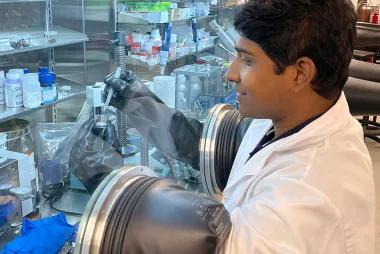Soccer headers briefly slow brain activity, UBC engineering study shows

Using the head to pass, shoot, or clear a ball is routine in soccer and does not typically lead to concussions. However, a new study from the University of British Columbia reveals that even mild heading has some measurable effects on the brain.
The study published in the Annals of Biomedical Engineering revealed that impacts from heading the ball are followed by a momentary slowing of brain activity, producing brain waves that are more typically associated with sleep and drowsiness.
In the experiment, eight healthy adults performed controlled headers with a soccer ball, with forces comparable to those typically seen during play. They wore electroencephalography (EEG) sensors and custom mouthguards that simultaneously tracked brain activity and head movement.
The participants experienced brief but statistically significant increases in delta brain waves within moments of impact, said lead researcher Dr. Lyndia Wu, an assistant professor of mechanical engineering in the Faculty of Applied Science who studies sports-related injuries.
“Delta waves are low-frequency waves linked to drowsiness and sleep,” said Dr. Wu. “When this sleep-like delta activity occurs while awake, it may disrupt information processing and lead to lapses in attention. For athletes, this may translate to reduced focus following an impact.”
She noted the growing concern over the effects on the brain of repeated exposure to this type of milder head impact.
“This study is unique since it allowed us to measure what’s happening in the brain immediately after a head impact. There is increasing research on sub-concussive head impacts, but most studies have only been able to measure post-game or post-season effects, which would not help understand the effects of individual impacts and how they may be accumulating.”
The study also examined how the severity and direction of impacts influence brain activity. Stronger impacts resulted in greater increases in delta waves, while oblique impacts led to greater activity on the opposite side of the head.
Most participants' brain activity returned to normal quickly, indicating no long-term effects. However, some showed more pronounced changes, suggesting individual differences in brain response.
“Understanding these changes in brain activity helps us assess how the brain responds to impacts and can inform future safety protocols and guidelines for sports,” Dr. Wu added.
These findings underscore the need for personalized safety measures and further research into how individuals react to impacts, particularly in sports with frequent head impacts such as soccer and football.
“This research advances our understanding of how mild head impacts affect brain function. It paves the way for further studies on repeated impacts and speaks to the importance of ongoing research to protect athletes' health,” said Dr. Wu. “Our future research may look into the effects of more frequent repeated impacts, and how the rest time between impacts may affect recovery.”



